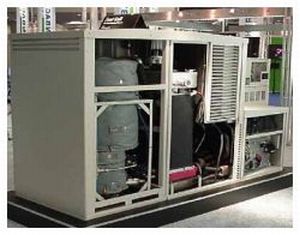
Researchers at the Biodesign Institute of Arizona State University have come up with an alternative way of generating electricity. In a new study featured in the journal Biotechnology and Bioengineering, lead author Andrew Kato Marcus and colleagues Cesar Torres and Bruce RittmannThey mentioned that they are using the tiniest organisms on the planet-bacteria-for this purpose. They added that they are looking forward to commercialization of a promising microbial fuel cell (MFC) technology. The microbial fuel cell will generate electrical energy by using any kind of waste, such as sewage or pig manure.
But why bacteria? Marcus explains that apart from being cheap, Bacteria have such a rich diversity that researchers can find a bacterium that can handle almost any waste compound in their daily diet. By linking bacterial metabolism directly with electricity production, the MFC eliminates the extra steps necessary in other fuel cell technologies.
Let’s find out the mechanism behind this. All MFCs have a pair of battery-like terminals: an anode and cathode electrode. The electrodes are connected by an external circuit and an electrolyte solution to help conduct electricity. The difference in voltage between the anode and cathode, along with the electron flow in the circuit, generate electrical power. In the first step of the MFC, an anode respiring bacterium breaks down the organic waste to carbon dioxide and transfers the electrons released to the anode. Next, the electrons travel from the anode, through an external circuit to generate electrical energy. Finally, the electrons complete the circuit by traveling to the cathode, where they are taken up by oxygen and hydrogen ions to form water. Marcus also explains the scientific mechanism as to how the bacteria get the electrons to the anode. In this context, he goes on to explain the concept of ‘biofilm’. Because bacteria use the anode in their metabolism, they strategically position themselves on the anode surface to form a bacterial community called a biofilm. Bacteria in the biofilm produce a matrix of material so that they stick to the anode.
The project has been funded by NASA and industrial partners OpenCEL and NZLegacy.
Via: The Money Times




